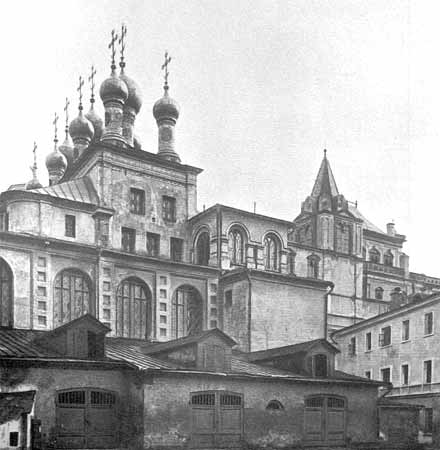After the conflagration in 1635, Russian master builders Bazhen
Ogurtsov, Antip Konstantinov, Trefil Sharutin and Larlon Ushakov built
new brick chambers for the tzar on to the parts of the older wooden
palace erected by the architect Alevisio Fryazin in 1499-1508.

If you take a close look at the facade of the palace, you will see that
the middle window of the upper storey, in the tzar's study, is decorated
with a particularly at tractive white-stone surround. It was called the
Petition Window. From here a box was lowered into which anyone could put
a petition which the tzar himself supposedly read and considered.
Petitions would lie in wait for a long time and the box came to be known
as the Long Box among the common people and gave rise to the saying, "to
leave one's business to the Long Box".
The Terem Palace helps one form an idea of everyday life in the palace
at the time. The old basement built by Alevisio housed service
facilities, as well as storerooms and cellars. Part of the Terem Palace
was occupied by palatial workshops where ceremonial vestments, clothes
and linens for the tzar and his family were made and kept. The Tzar's
living quarters, the Terems, occupied three upper stories. Adjoining
them on their south side was a vast open place known as the Boyar
Square. From here, a stairway led to the Upper Saviour Square, the
entrance to which was screened off by the famous Golden Grille,
skilfully forged from copper, painted and gilded. It is reminiscent of
the Copper Rebellion, shocked Moscow three hundred years ago. |


